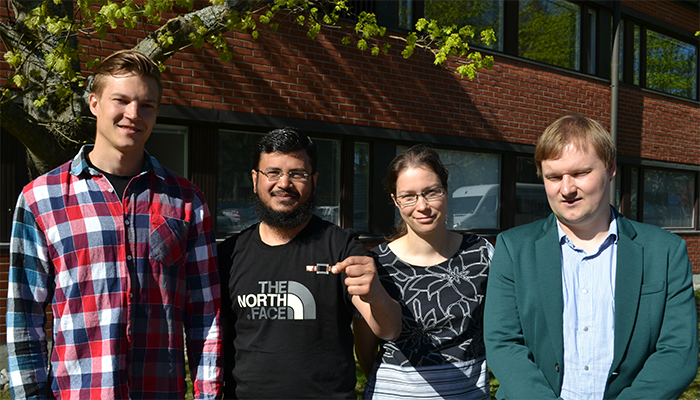Researchers discovered new method for improving perovskite solar cell performance
With humidity assisted thermal treatment the overall efficiency increases almost 45 per cent.

The Aalto-developed treatment builds on previous breakthroughs improving the efficiency and longevity of perovskite solar cells using established printing methods (carbon back contact based perovskite solar cells or CPSCs). These findings make it possible to further enhance the efficiency of these types of solar cells.
Perovskite solar cells are solar cells where the light harvesting layer consists of lead halide with perovskite crystal structure. Globally, perovskite cells are studied intensively since they might prove to be an alternative to silicon cells that require a lot of energy in the manufacturing process.
In the new method, the perovskite solar cells were exposed to 40-degrees in a chamber where humidity was kept in the level of 70 per cent (±5 per cent). This kind of environment normally degrades the properties of perovskite solar cells. In this case, the treatment led to surprising growth of the perovskite crystals, which naturally absorb sunlight and generate electricity.
“The photovoltaic performance was significantly enhanced, and the overall efficiency increased almost 45 per cent,” says Dr Ghufran Hashmi, an Academy of Finland postdoctoral researcher.
“Ghufran Hashmi was interested in possible changes in the atomic structure of the perovskite solar cells. With the state-of-the-art X-ray diffractometer of the Nanomicroscopy Center at Aalto, we were able to monitor the crystallite structure of the perovskite layer before and after the treatment,” says Dr Ulla Vainio, a staff scientist in the Department of Applied Physics, who assisted Hashmi with collecting experimental data.
The team did not stop there, but examined the perovskites using a scanning electron microscopy (SEM). “The SEM images supported the previous observations obtained from the X-ray diffraction method analysis, which endorsed the gradual crystal growth over the period of exposure,” reports Dr Teemu Sarikka, a staff scientist in the Department of Mechanical Engineering.
The task of physics doctoral student Teemu Myllymäki was to check if any chemical changes occurred in the perovskite crystal structure induced by the moisture generated by the thermo-humid environment. In his research, Myllymäki utilized Fourier transform infrared spectroscopy (FTIR). “The comparison between the fresh and exposed solar cells revealed almost no change in the chemical structure of the perovskite light absorbing layer, which endorses the successful implementation of this new treatment method,” he reports.
Solar cells are part of the rapidly expanding area of next-generation, low-cost photovoltaic systems. The team at Aalto benefited from working with collaborators in Switzerland, the Solaronix company and the Swiss Federal Institute of Technology (EPFL) in Lausanne. “Solaronix provided the samples and EPFL researcher Dr Ibrahim Dar helped us in key processes that are critically required for the successful commercialization of this low cost solar cell technology,” says Dr Hashmi.
The results are reported in detail in Journal of Materials Chemistry A.
The research was mainly funded by the Academy of Finland.

The team from Aalto University involved in this research work with an HTE treated carbon based printed perovskite solar cell. From left to right: Teemu Myllymäki, Ghufran Hashmi, Ulla Vainio, Teemu Sarikka. Photo: Nonappa.
Research article: S. G. Hashmi, D. Martineau, M. I. Dar, T. T. T. Myllymäki, T. Sarikka, U. Vainio, S. M. Zakeeruddin ja M. Grätzel. High performance carbon-based printed perovskite solar cells with humidity assisted thermal treatment. Journal of Materials Chemistry A. DOI: 10.1039/C7TA04132B.
Contact:
Dr Syed Ghufran Hashmi
Finnish Academy Postdoctoral Researcher
Aalto University, Dept. of Applied Physics
Tel. +358 45 119 9233
ghufran.hashmi@aalto.fi

